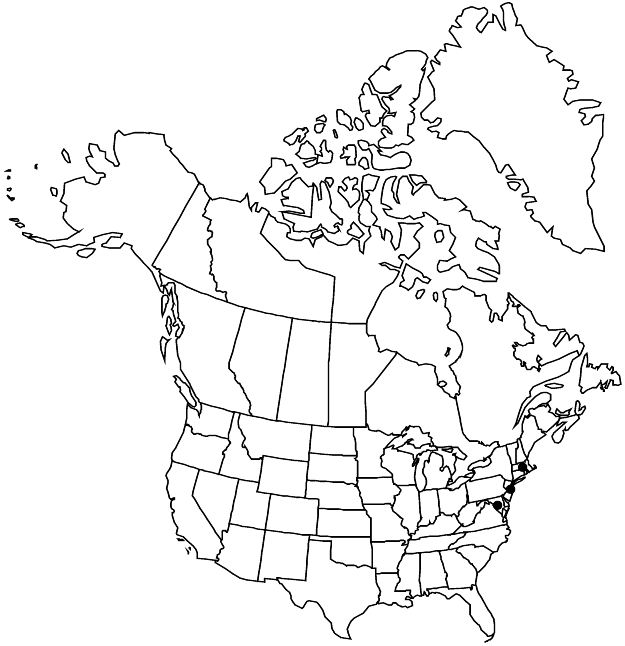Difference between revisions of "Spergula morisonii"
Rev. Bot. Recueil Mens. 2: 424. 1847.
FNA>Volume Importer |
imported>Volume Importer |
||
| Line 8: | Line 8: | ||
}} | }} | ||
|common_names= Morison’s spurrey ;Morison’s spurrey | |common_names= Morison’s spurrey ;Morison’s spurrey | ||
| + | |special_status={{Treatment/ID/Special_status | ||
| + | |code=I | ||
| + | |label=Introduced | ||
| + | }} | ||
|basionyms= | |basionyms= | ||
|synonyms= | |synonyms= | ||
| Line 24: | Line 28: | ||
|elevation=10-100 m | |elevation=10-100 m | ||
|distribution=Md.;Mass.;N.J.;Europe. | |distribution=Md.;Mass.;N.J.;Europe. | ||
| + | |introduced=true | ||
|discussion=<p><i>Spergula morisonii</i> was first reported for North America from New Jersey in 1966; the earliest collections date from 1917 (D. B. Snyder 1987). It should be expected elsewhere in the flora area; the collections from Maryland and Massachusetts date from 2002 and 2000 respectively, with the Maryland population described as including “thousands of plants” (B. W. Steury 2004).</p> | |discussion=<p><i>Spergula morisonii</i> was first reported for North America from New Jersey in 1966; the earliest collections date from 1917 (D. B. Snyder 1987). It should be expected elsewhere in the flora area; the collections from Maryland and Massachusetts date from 2002 and 2000 respectively, with the Maryland population described as including “thousands of plants” (B. W. Steury 2004).</p> | ||
|tables= | |tables= | ||
| Line 47: | Line 52: | ||
|publication title=Rev. Bot. Recueil Mens. | |publication title=Rev. Bot. Recueil Mens. | ||
|publication year=1847 | |publication year=1847 | ||
| − | |special status= | + | |special status=Introduced |
| − | |source xml=https:// | + | |source xml=https://bibilujan@bitbucket.org/aafc-mbb/fna-data-curation.git/src/bb6b7e3a7de7d3b7888a1ad48c7fd8f5c722d8d6/coarse_grained_fna_xml/V5/V5_18.xml |
|subfamily=Caryophyllaceae subfam. Polycarpoideae | |subfamily=Caryophyllaceae subfam. Polycarpoideae | ||
|genus=Spergula | |genus=Spergula | ||
Revision as of 23:31, 27 May 2020
Plants glabrous or densely pubescent or glandular. Stems often branched proximally, 5–35 cm. Leaf blades usually flat, 0.3–1.5(–2) cm, usually not channeled abaxially. Pedicels erect to ascending, spreading or sometimes reflexed in fruit, sometimes secund. Flowers: sepals 3–4 mm; petals ovate, 2/3–7/8 times as long as sepals in flower, apex obtuse; stamens usually 10. Capsule valves 3.5–6 mm. Seeds winged, lenticular, 0.9–1 mm wide, surface minutely roughened or low-tuberculate (50×), with marginal ring of tan, club-shaped papillae; wings light brown to brownish black, 0.2–0.3 mm wide. 2n = 18 (Europe).
Phenology: Flowering spring–early summer.
Habitat: Sandy roadsides, disturbed areas
Elevation: 10-100 m
Distribution

Introduced; Md., Mass., N.J., Europe.
Discussion
Spergula morisonii was first reported for North America from New Jersey in 1966; the earliest collections date from 1917 (D. B. Snyder 1987). It should be expected elsewhere in the flora area; the collections from Maryland and Massachusetts date from 2002 and 2000 respectively, with the Maryland population described as including “thousands of plants” (B. W. Steury 2004).
Selected References
None.